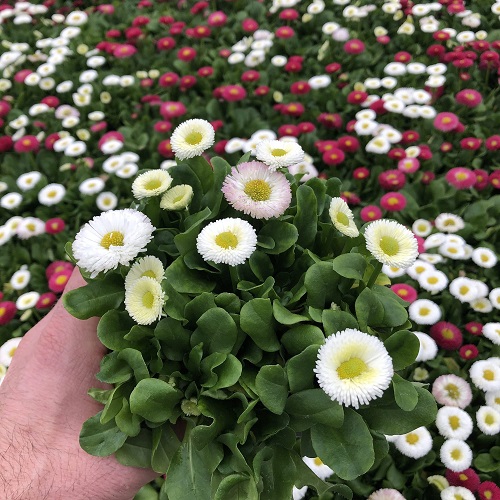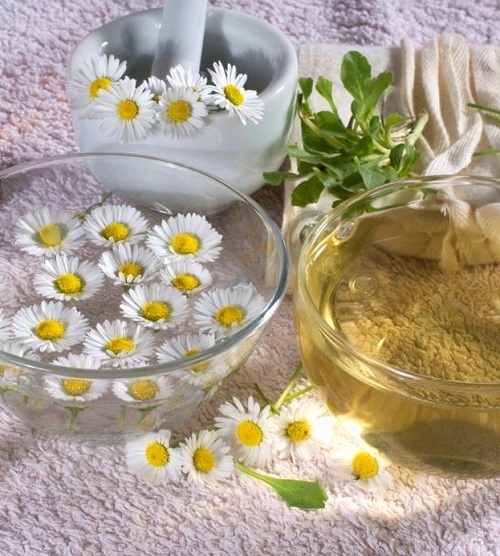Here’s a detailed guide on Bellis Perennis Uses and Growing Information that will give you a clear insight into everything!
Common Daisy is not only a classic symbol of innocence and purity, but it also has a variety of benefits. So there you have it – Bellis Perennis Uses and Growing Information, all in one fun-loving article!
Check out some beautiful daisy like flowers here
About Bellis Perennis 
Bellis perennis, also popular as the common daisy, is a hardy perennial native to Europe and Asia. It’s a low-growing plant, reaching a height of only about 6-12 inches, and produces small, white, or pink flowers. You can easily grow these little beauties in your garden or even in containers on your balcony or windowsill.
Among the flowering plants in the Asteraceae family, Bellis perennis is one species. It is also popular in traditional medicine for its anti-inflammatory and pain-relieving properties, as well as in skin care products.
Love flowering plants? Here are the Best Flowering Vines and Climbers to Grow in Gardens & Containers
Bellis Perennis Growing Information
Location
When choosing a location to plant your daisies, look for an area that gets at least 5-6 hours of sunlight daily. Planting these beauties in a shaded location will limit their growth and flowering.
Soil
Bellis perennis prefers soil that is rich in organic matter, so add some compost or well-rotted manure to the planting area. If your soil is heavy or clay-based, consider adding some sand or perlite to improve drainage.
Find out some Helpful Hacks to Improve Your Garden Soil for Free here
Watering
The plant prefers to be kept moist but not waterlogged. Don’t overwater Bellis perennis – the best trick to follow is to moisten the growing medium well whenever the topsoil feels a little dry to the touch. Refrain from watering the plant daily.
Here are the best ways to water plants
Fertilization
Fertilize the plants in early spring, just before new growth begins. This is when the plant is most actively growing and can make the best use of the nutrients.
Use a balanced liquid feed diluted to half of its strength. Avoid using high-nitrogen fertilizers, as this can lead to excessive leaf growth at the expense of flowers.
Check out Super Quick Banana Peel Powder Fertilizer Recipe for More Flowers here
Pests and Diseases
Bellis perennis is generally hardy and resistant to pests and diseases. However, they can sometimes fall prey to aphids, slugs, and snails. Check the plants regularly and remove any pests by hand or with a strong jet of water. You can also use organic pest control methods, such as neem oil or insecticidal soap.
Regarding diseases, Bellis perennis can sometimes develop powdery mildew or leaf spot. To prevent these issues, ensure the plants have good air circulation and avoid overhead watering. If you do notice signs of disease, remove and dispose of affected plant parts.
Click here to learn the Amazing Natural Pesticide Recipe that can Kill any Pest
Bellis Perennis Uses
Here are some of the most common Bellis Perennis Uses:
- Culinary Use: Its leaves are edible and have a slightly bitter taste. They can be used in salads or as a garnish for dishes. The flowers can also be used as a decoration for cakes and other desserts.
- Medicinal Use: Bellis perennis has been traditionally used in herbal medicine to treat a variety of ailments, such as digestive disorders, respiratory infections, and skin conditions. However, it’s important to note that you should always consult a healthcare professional before using any herbal remedies.
- Landscaping: The plant is often used in landscaping as a ground cover or as a border plant. It can add a pop of color to a garden with its white and pink flowers.
- Home Remedies: The leaves of the plant can be crushed and applied to bruises or other minor skin irritations to reduce inflammation and promote healing.
- Beauty: Bellis perennis extract is used in some skincare products for its anti-inflammatory and antioxidant properties. It is believed to help soothe and protect the skin.
- Aromatherapy: The essential oil of the common daisy is sometimes used in aromatherapy to help promote relaxation and reduce stress.





